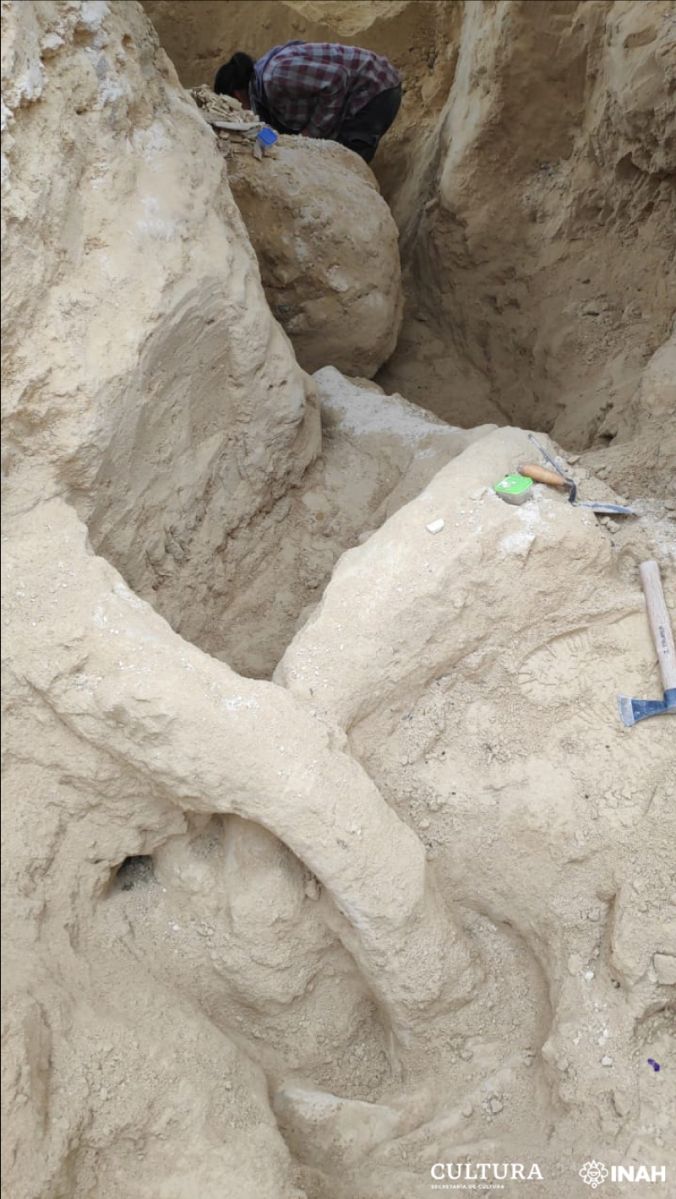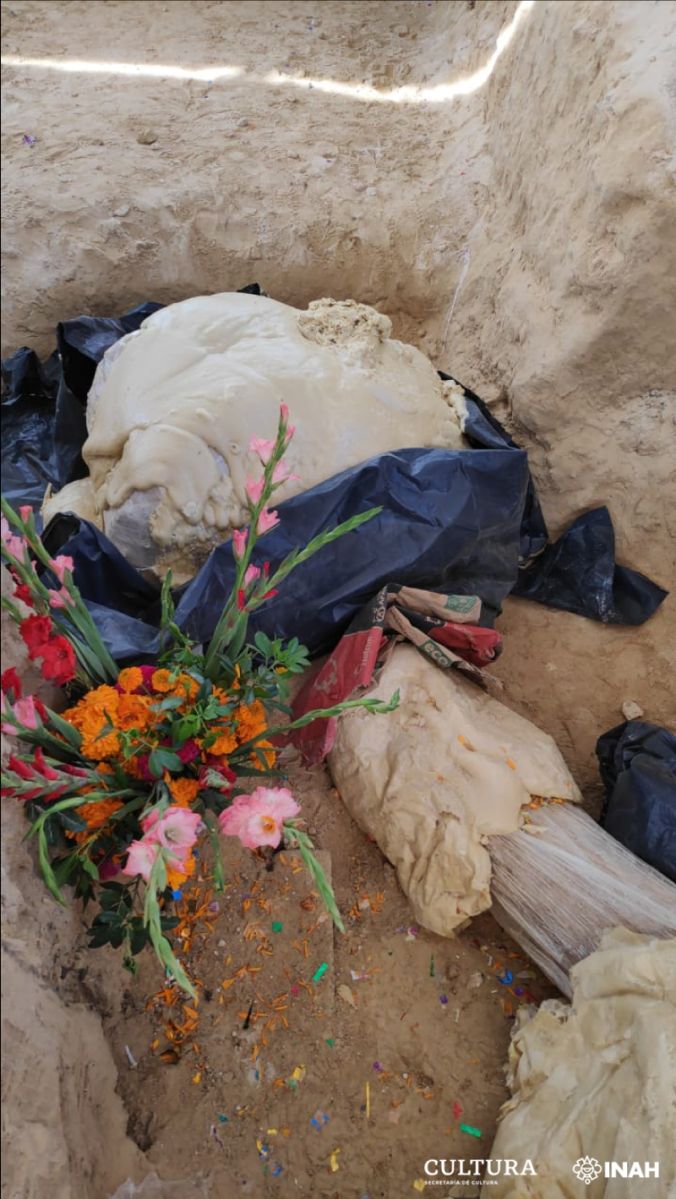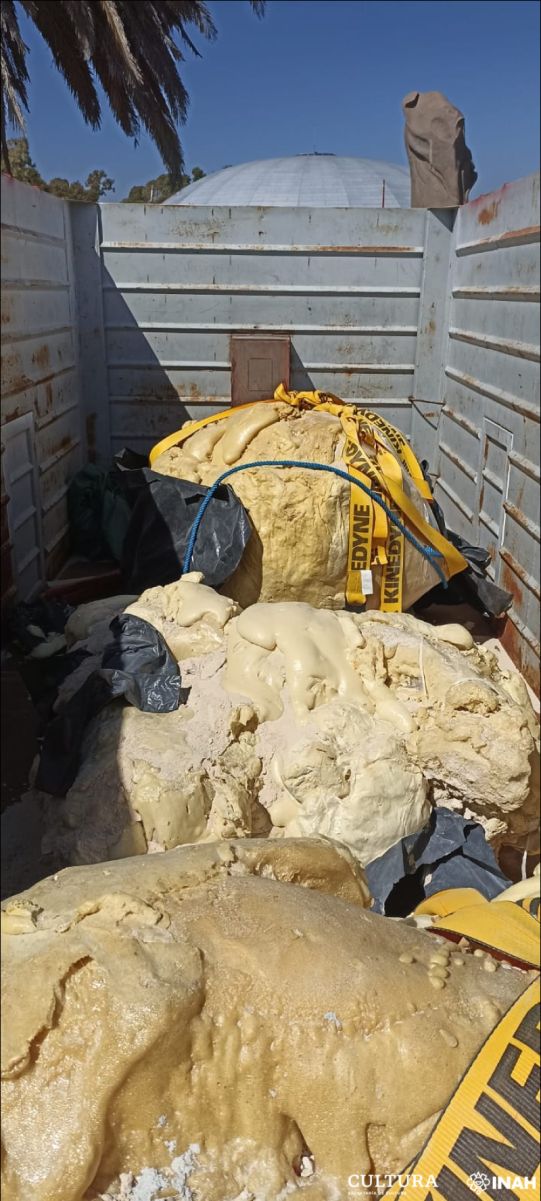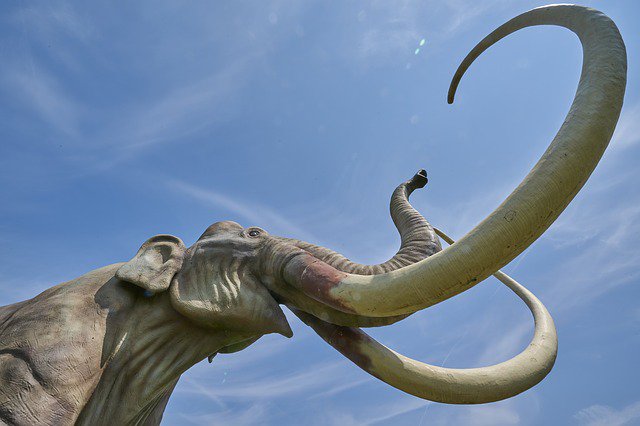MEXICO, (December 09, 2021).- The National Institute of Anthropology and History (INAH) of Mexico notified this Wednesday the discovery of the remains of a mammoth that dates back “at least” 10,000 years in the central state of Puebla.
The remains were located in the municipality of Los Reyes de Juárez, in eastern Puebla, when the person in charge of taking care of the municipal cemetery came across, with his backhoe, what he believed to be a root, but when he pushed, fragments that appeared to be bone jumped.

The mayor of Los Reyes, Manuel Herrera, notified the INAH of Puebla of the finding, from where they attended the report and went to the place to make an inspection, in which he verified that it was “bones of megafauna from the Pleistocene.”
After the above, the INAH Puebla Center began the paleontological excavation. The biologist Iván Alarcón Durán, from INAH, reported that “through archaeological salvage tasks to the surprise of all who dug, in the hallway, between the rows of graves and the smell of chrysanthemums, it was possible to recover a defense (which is usually confused with fangs) almost complete, with an initial measurement of 2.90 meters, and the second defense that was broken by the machine was also found ”.

Likewise, the fragmented skull, 70% of the pelvis and some rib fragments were recovered – the most complete of these retains 60% of its original size.
“To avoid bone deterioration, the skull was removed immersed in a box of hardened sediment and will be carefully cleaned in the laboratory for later analysis“ Explained the INAH.

In addition, in the layers of earth where the mammoth bones were found, the specialist identified travertine strata – a sedimentary rock of considerable hardness that is formed with calcium carbonates, associated with the presence of water sources, such as underground lakes or rivers.
To delve into the foregoing, Carlos Castañeda, a research professor at the Autonomous University of Puebla, will collaborate with the INAH Puebla Center carrying out pollen studies, which will “allow the reconstruction of the palaeoenvironment where the new municipal pantheon is now located,” the institution explained.

The bone pieces were transferred to the laboratories of the INAH Puebla Center, where they are treated for their conservation and study.
Source: OEM






